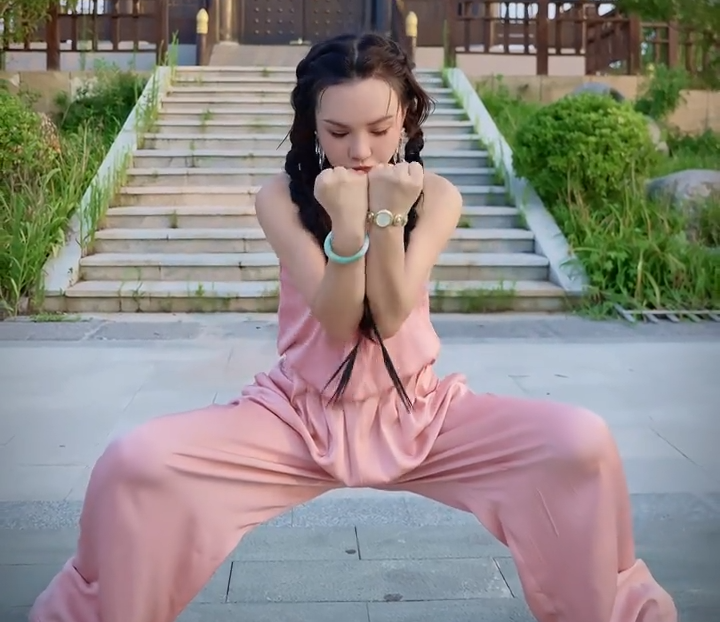The Embodiment of Nature's Fury and Wisdom: A History and Culture of Five Animals Kung Fu (Wu Xing Quan)
Deep within the philosophical and practical tapestry of Chinese martial arts lies the vibrant, enduring system known as Five Animals Kung Fu (Wu Xing Quan, 五形拳). More than just a collection of fighting techniques, it represents a profound synthesis of careful observation of nature, Daoist philosophy, traditional Chinese medicine, and centuries of combat refinement . Its history is ancient, its cultural significance deeply intertwined with Chinese identity, and its influence pervasive across countless martial styles.

Roots in Antiquity: Observation and Emulation
The core concept of Five Animals Kung Fu originates in humanity's timeless practice of learning from nature. Ancient Chinese warriors and healers observed the unique strengths, survival strategies, and movements of animals, recognizing patterns that could be adapted to human advantage. While pinpointing an exact origin date is impossible, the philosophical groundwork was laid millennia ago. Daoist concepts of natural harmony, the flow of Qi (vital energy), and the balance of Yin and Yang provided the theoretical framework. Simultaneously, early medical practitioners like Hua Tuo (c. 140-208 CE) are credited with developing health exercises explicitly modeled on animal movements – notably the "Frolics of the Five Animals" (Wu Qin Xi) – to promote longevity and cure ailments through regulated breathing and gentle motion. This therapeutic foundation was crucial, emphasizing the intrinsic link between physical movement, energy cultivation, and well-being that would become central to the martial art.
Evolution and the Shaolin Crucible
The transformation of these observations and health exercises into a comprehensive martial system is most famously associated with the Shaolin Temple . Legends often attribute its codification within Shaolin to the semi-mythical Bodhidharma (Da Mo) around the 6th century CE, who supposedly introduced exercises to strengthen the sedentary monks, incorporating animal-like movements. While historians debate Da Mo's direct involvement, Shaolin undoubtedly became a crucible where observation, medicine, Buddhist discipline, and the harsh necessity of self-defense fused over centuries. Monks systematically studied the animals – Tiger, Leopard, Crane, Snake, and Dragon – not merely to mimic, but to embody their essence :
Tiger (Hu 虎): Raw power, ferocity, bone strengthening. Emphasizes overwhelming strength, clawing attacks, and indomitable spirit. Fists like hammers, stances rooted and powerful.
Leopard (Bao 豹): Explosive speed, agility, muscular force. Focuses on swift footwork, whipping strikes (often with leopard fist), and evasive angles for rapid, penetrating attacks.
Crane (He 鶴): Grace, balance, precision, tendon development. Characterized by long stances, deep stances, precise pecking strikes, sweeping wings (blocks), and evasive footwork. Emphasizes patience and finding openings.
Snake (She 蛇): Flexibility, fluidity, accuracy, and attacking vital points. Features coiling movements, rapid finger thrusts (snake tongue), deceptive angles, and the ability to strike seemingly from any position. Develops internal fluidity.
Dragon (Long 龍): Mystical power, wisdom, spirit cultivation. Represents internal strength, combining soft and hard, using spiraling and coiling movements, controlling the opponent's center, and projecting intimidating spirit. It embodies the unity and flow between the other animals.
Beyond Shaolin: Systematization and Spread
While Shaolin provided a seminal environment, Five Animals Kung Fu was not confined to the temple walls. Over time, particularly during the Ming (1368-1644) and Qing (1644-1912) dynasties, itinerant monks, rebel fighters, and master instructors disseminated the principles throughout China. It became integrated into numerous family and regional styles. Hung Gar Kuen , a foundational Southern style, famously incorporates strong Tiger and Crane elements. Choy Lee Fut blends the Five Animals dynamics within its complex repertoire. Southern Dragon Style (Long Xing Quan) focuses intensely on embodying the Dragon's qualities. Fujian White Crane is a prime example of a style deeply rooted in Crane principles. Each style emphasized different combinations or interpretations of the animals, adapting them to local preferences and fighting needs.
Cultural Significance: More Than Fighting
Five Animals Kung Fu transcends mere combat effectiveness. It embodies core aspects of Chinese culture :
Harmony with Nature (天人合一 Tian Ren He Yi): It is a profound expression of the Daoist principle of learning from and aligning with the natural world. Practitioners seek to internalize the wisdom and energy of these creatures.
Holistic Health: Like its medical ancestor (Wu Qin Xi), the practice is deeply therapeutic. It cultivates Qi, strengthens organs and meridians according to TCM principles (e.g., Tiger benefits bones/lungs, Snake benefits kidneys), improves flexibility, balance, and cardiovascular health. It is a moving meditation for longevity.
Character Development: Training each animal cultivates specific virtues: Tiger builds courage and power, Leopard fosters alertness and speed, Crane instills patience and calmness, Snake develops adaptability and precision, Dragon encourages wisdom and spiritual awareness. Mastering the system requires balancing these qualities.
Artistic Expression: The forms (Kata/Taolu) of Five Animals Kung Fu are visually stunning, resembling a dynamic dance portraying the animals' spirits. This makes it a powerful performance art deeply ingrained in Chinese cultural displays.
Symbolism: Each animal carries potent symbolic meaning within Chinese mythology and folklore – Tiger as protector and king, Crane as longevity and purity, Dragon as auspicious power and wisdom. Practicing the style connects one to these deep cultural archetypes.
Today, Five Animals Kung Fu remains one of the most recognizable and influential concepts within Chinese martial arts globally. Its principles are foundational to many styles taught worldwide. Modern practitioners continue to explore its depths, recognizing it not just as a fighting system, but as a living cultural heritage – a bridge connecting ancient wisdom, profound philosophy, practical health cultivation, and dynamic self-defense. It stands as a testament to the Chinese genius for synthesizing observation, philosophy, and physical discipline into a powerful and beautiful art form that continues to inspire and empower. From the therapeutic exercises of Hua Tuo to the legendary halls of Shaolin and into modern training spaces, the spirit of the Tiger, Leopard, Crane, Snake, and Dragon lives on.






